What Is Visual Search?
Visual search is when a user conducts a search with an image. Visual search often involves tools like Google Lens, Pinterest Lens, and Bing Visual Search.
For example, uploading an image of a flower to a visual search engine returns search results with webpages that contain similar images.
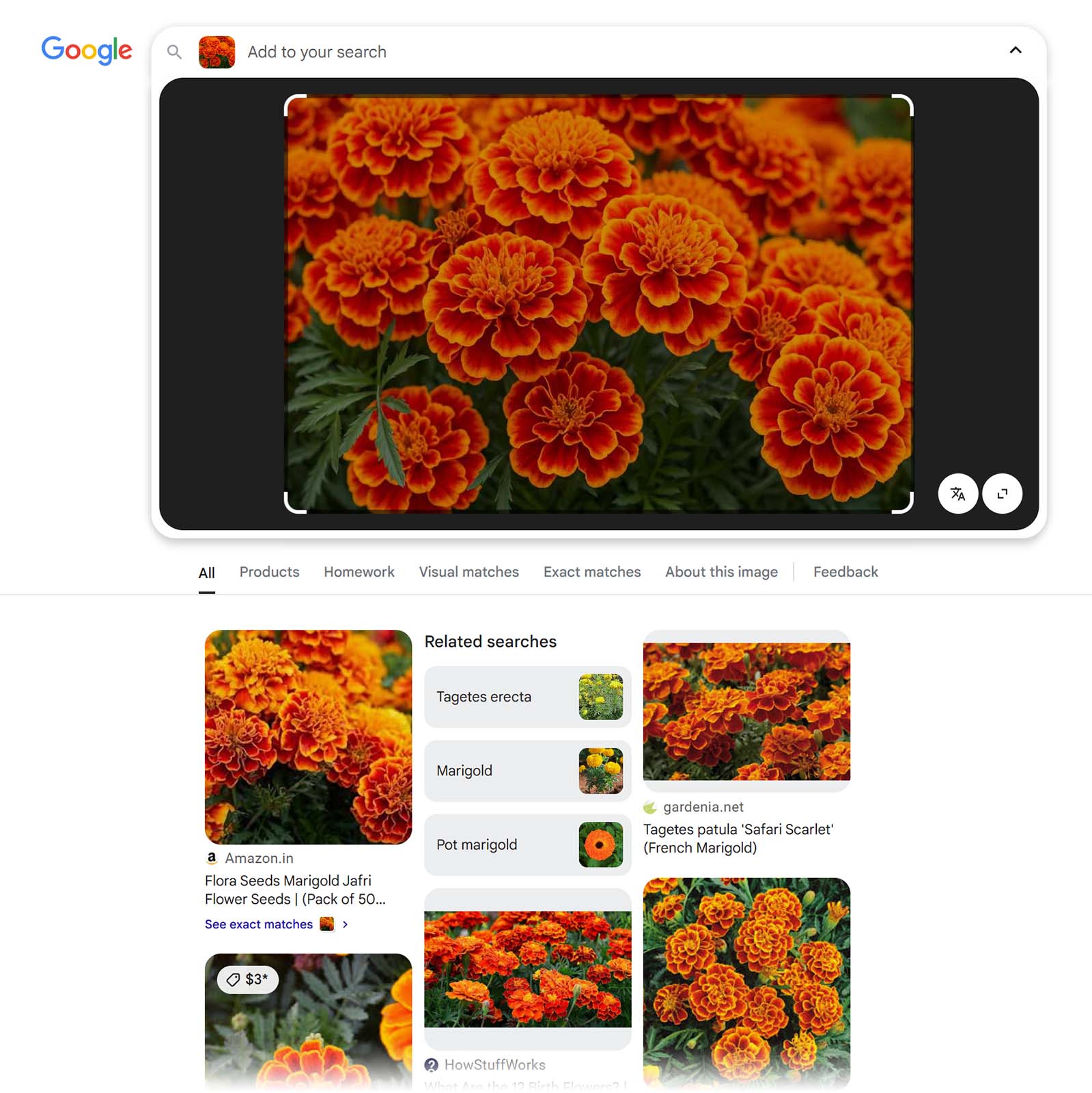
Users can also add text alongside images for more targeted results (also known as multisearch).
For example, in Google Lens, you can upload a photo of a dinner plate and add the word “cups” to display images of cups that match the dinner plate.
Visual search is helpful when:
- You’re unsure of an object’s name. Visual search engines can analyze the image to identify the object. And provide you with information.
- You’re looking for similar objects. Visual search engines excel at displaying images similar to the one you’ve shared.
Visual Search vs. Image Search
Visual search uses an image (and sometimes accompanying text) to find related pictures, while image search relies on text-only queries.
Below is an image search for “round orange flower” in Google’s “Images” tab.
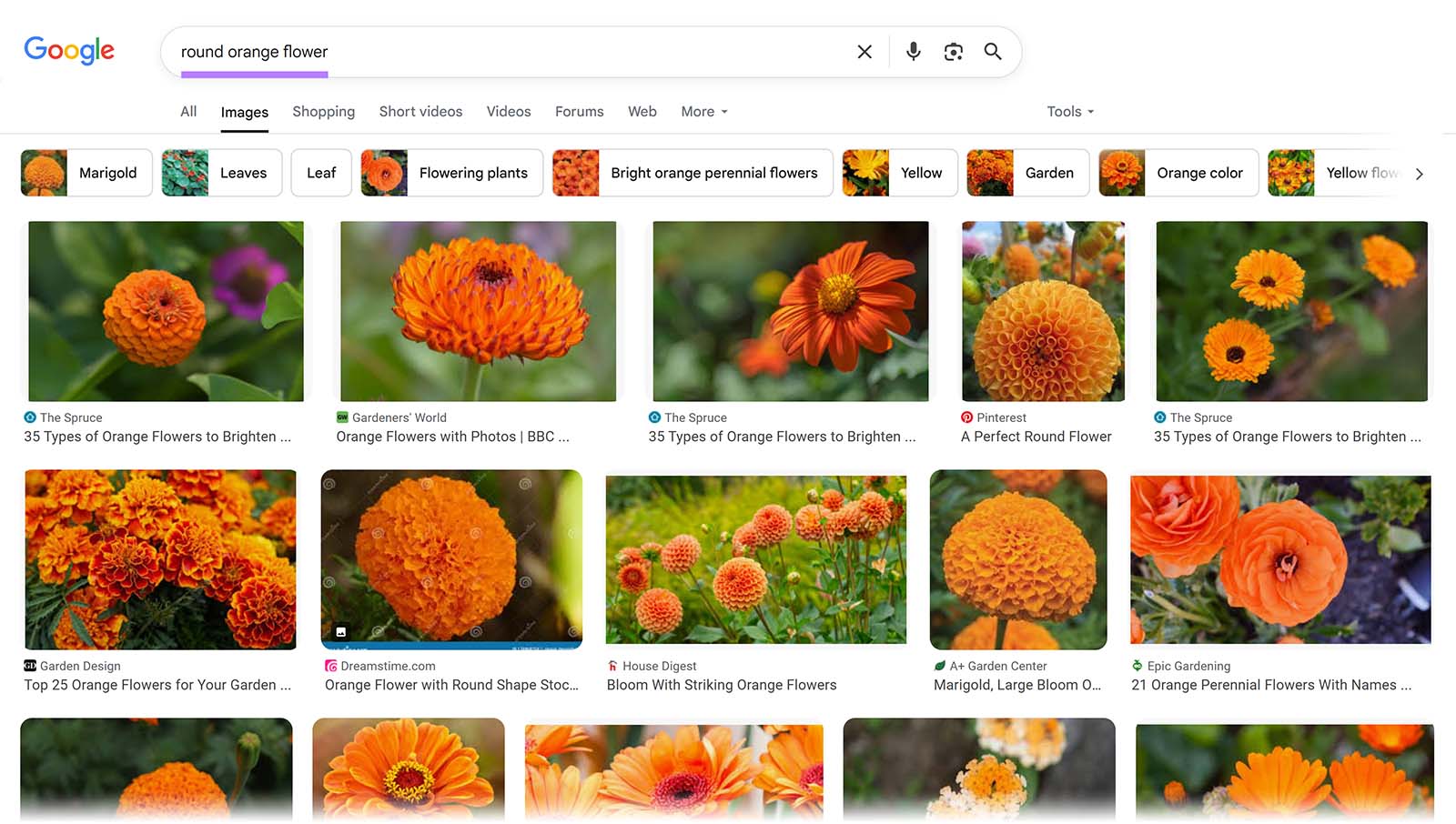
Image search is helpful when:
- You don’t have a reference image. In this case, use text to describe what you’re looking for.
- You’re looking for images with certain characteristics. Use descriptive text queries to narrow your search.
How Does Visual Search Work?
Google Lens, Pinterest Lens, and Bing Visual Search use machine learning models to interpret images and match them to visually similar content in their databases.
The visual search engine then shortlists images, ranks them based on relevance, and displays them to the user.
Why Does Visual Search Matter for SEO & Marketing?
Appearing in visual search can build brand awareness and position your content as trusted and relevant to users.
Here are two factors driving the importance of visual search:
Visual Search Adoption Is Growing
Marketers who optimize their images can increase their brand’s visibility in search results and stay competitive as visual discovery becomes more common.
Semrush data shows that traffic to lens.google reached 10M visits in May 2025—that’s up from 1M visits only two years prior.
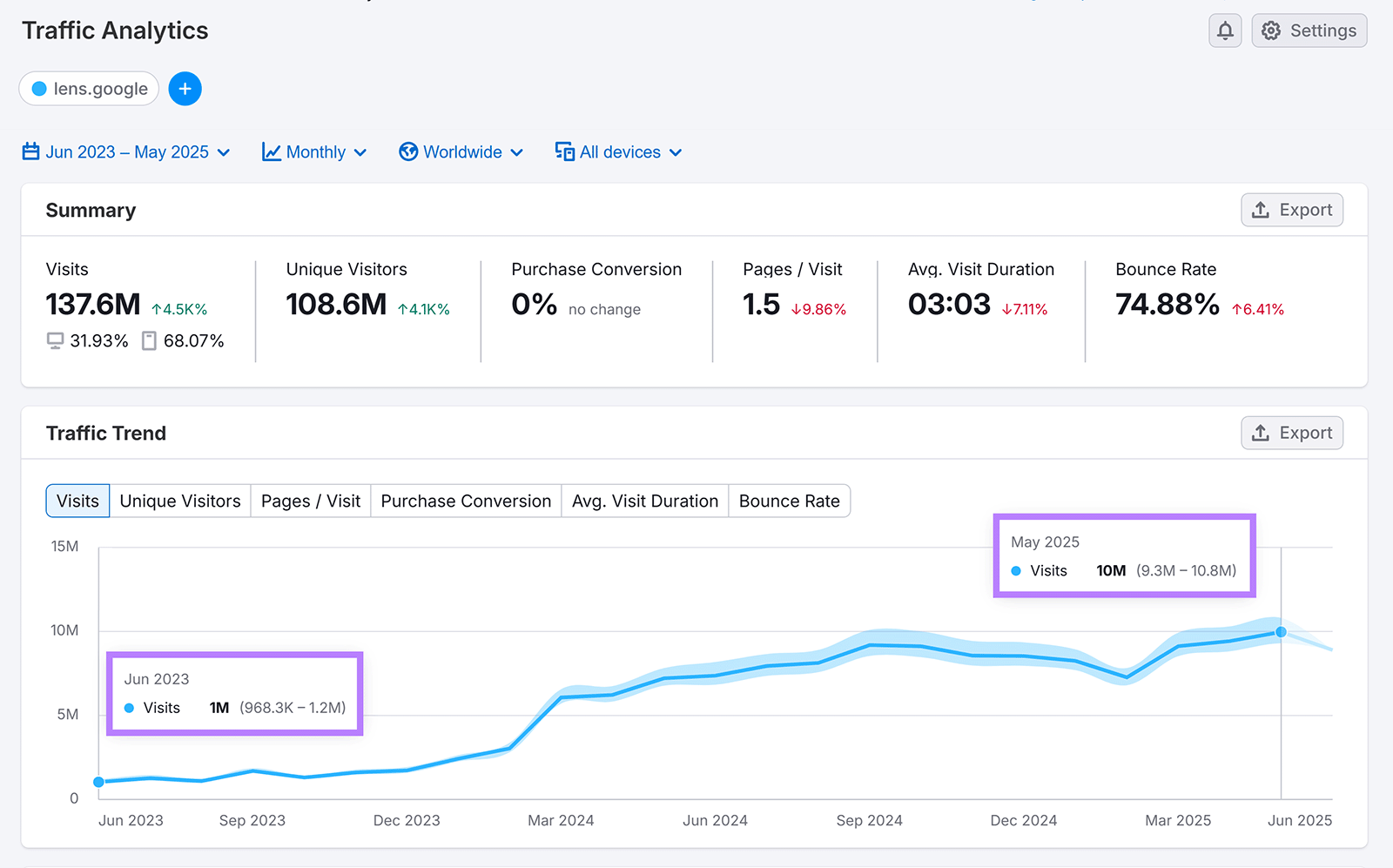
Images Are Prominent in AI Overviews
The techniques used to optimize images for visual search also optimize them for image search. And having your images show in AI Overviews provides visibility that builds brand awareness, even if users aren’t always clicking through.
Take a look at the AI Overview for the search “how do air purifiers work,” which includes an image from an air purifier company that exposes users to the brand.
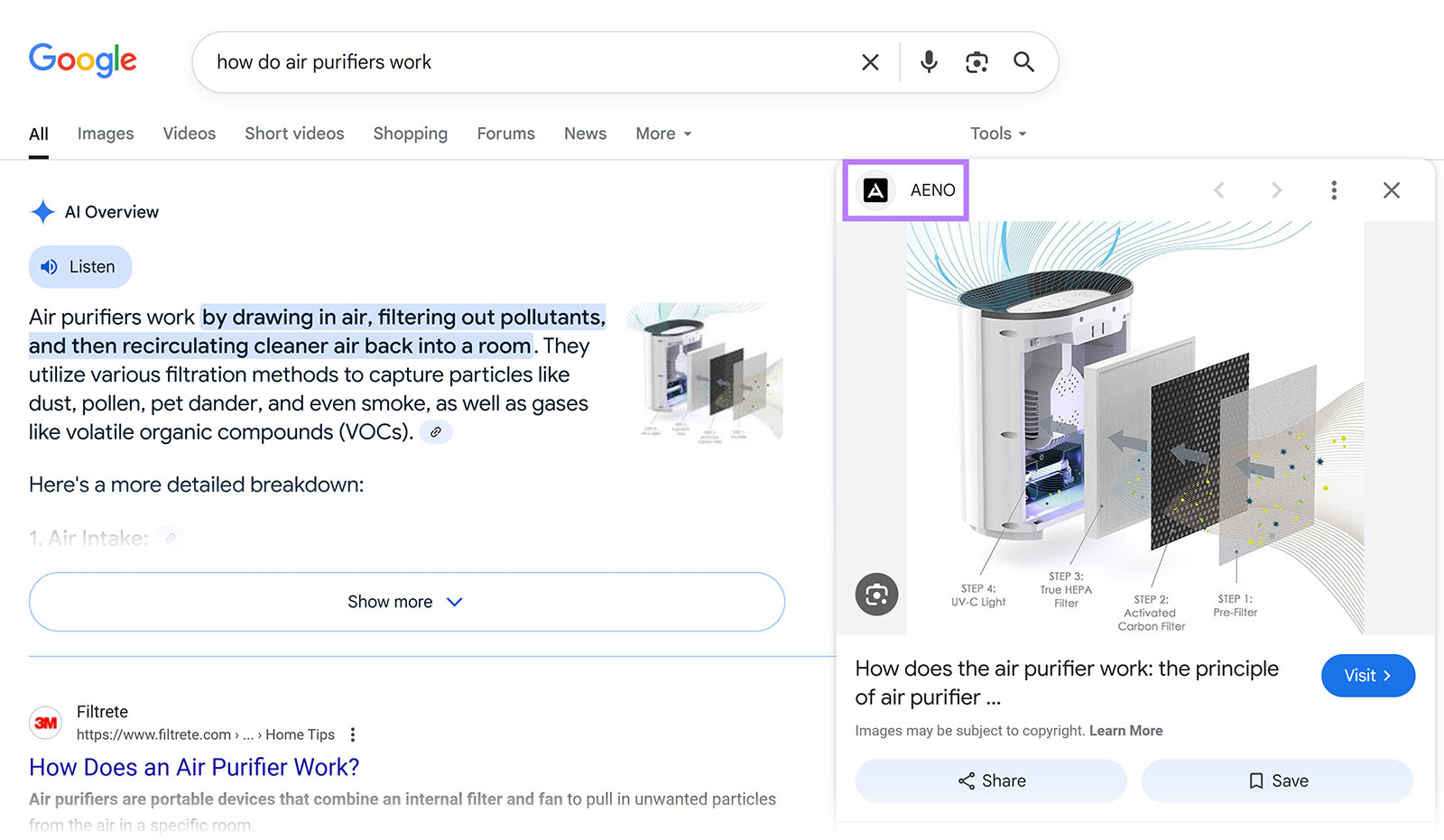
How to Optimize Your Images for Visual Search
The tips below help provide the context search engines need to select the most relevant images for each query.
1. Use High-Quality, Focused Images
A high-quality image that’s clear, bright, and focused on one subject makes it easy for search engines to identify what's being shown.
Plus, subjects in product-focused shots should be easily recognizable in both thumbnails and full-size images. So users can clearly see the image's subject as they scroll through the results.
2. Compress Files & Use Next-Gen Formats
Compressing images (reducing file sizes) and using next-gen formats like WebP and AVIF (which are more efficient than JPGs or PNGs) can improve page speed.
And faster sites provide a better user experience that may be rewarded with better rankings.
Upload your images to Google’s Squoosh tool to compress and convert them to next-gen formats.
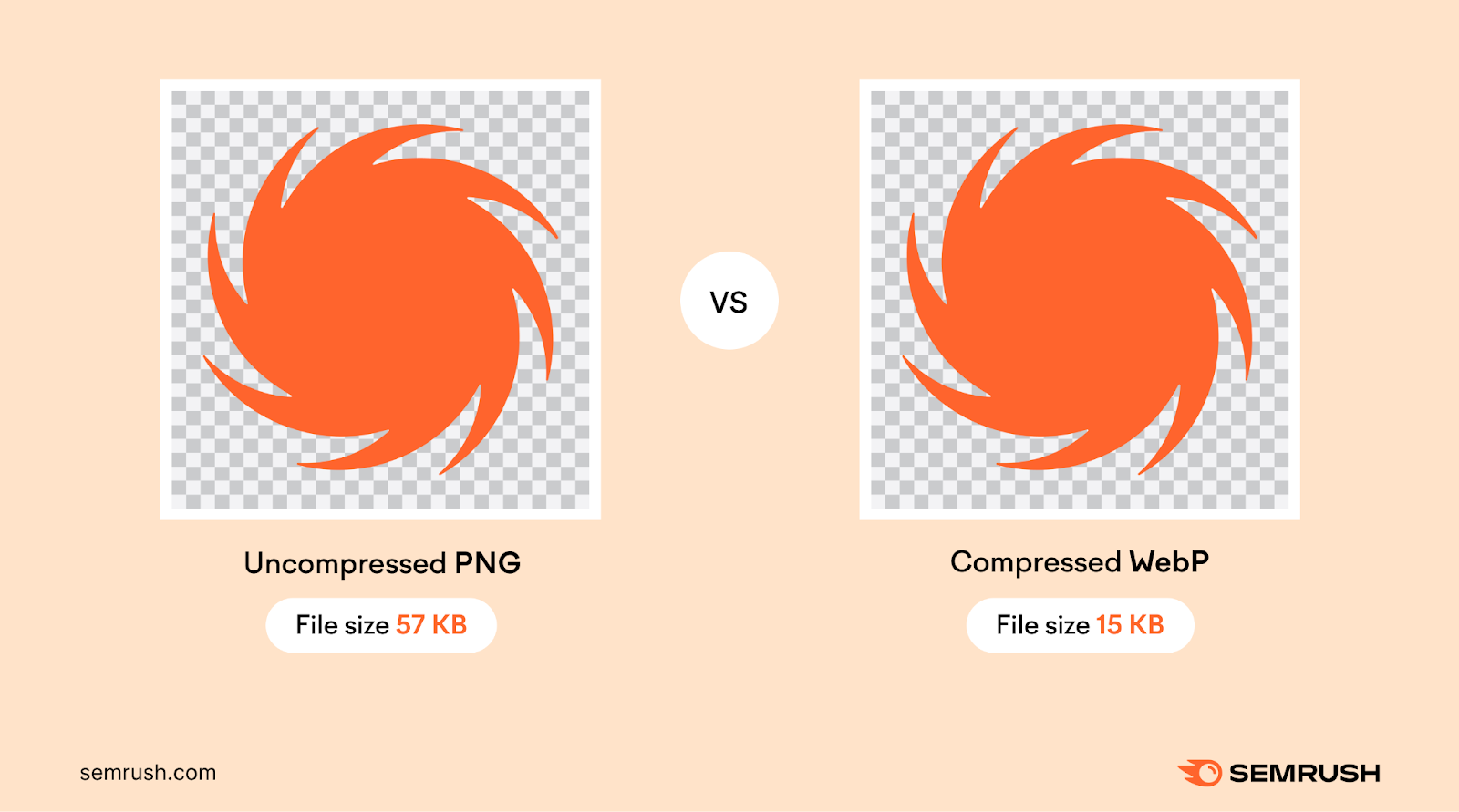
3. Write Descriptive File Names & Alt Text
Descriptive file names (like red-rose.webp instead of image1001.webp) and alt text give search engines more context about your image to improve its chance of showing in search results.
When naming image files, use hyphens to separate words (red-rose.webp—not red_rose.webp or redrose.webp). And keep the file name focused on what’s in the image.
For alt text, describe what’s in the image in plain language. For example, “red rose in full bloom on a white background.”
Alt text also helps users who rely on screen readers. So, keep your text relevant and concise.
Plus, using relevant keywords can help you rank in image search results.
To find out which keywords feature images in the search engines results pages (SERPs), use Semrush’s Keyword Overview tool.
Just enter a keyword and scroll to the “SERP Analysis” section to look for image results.
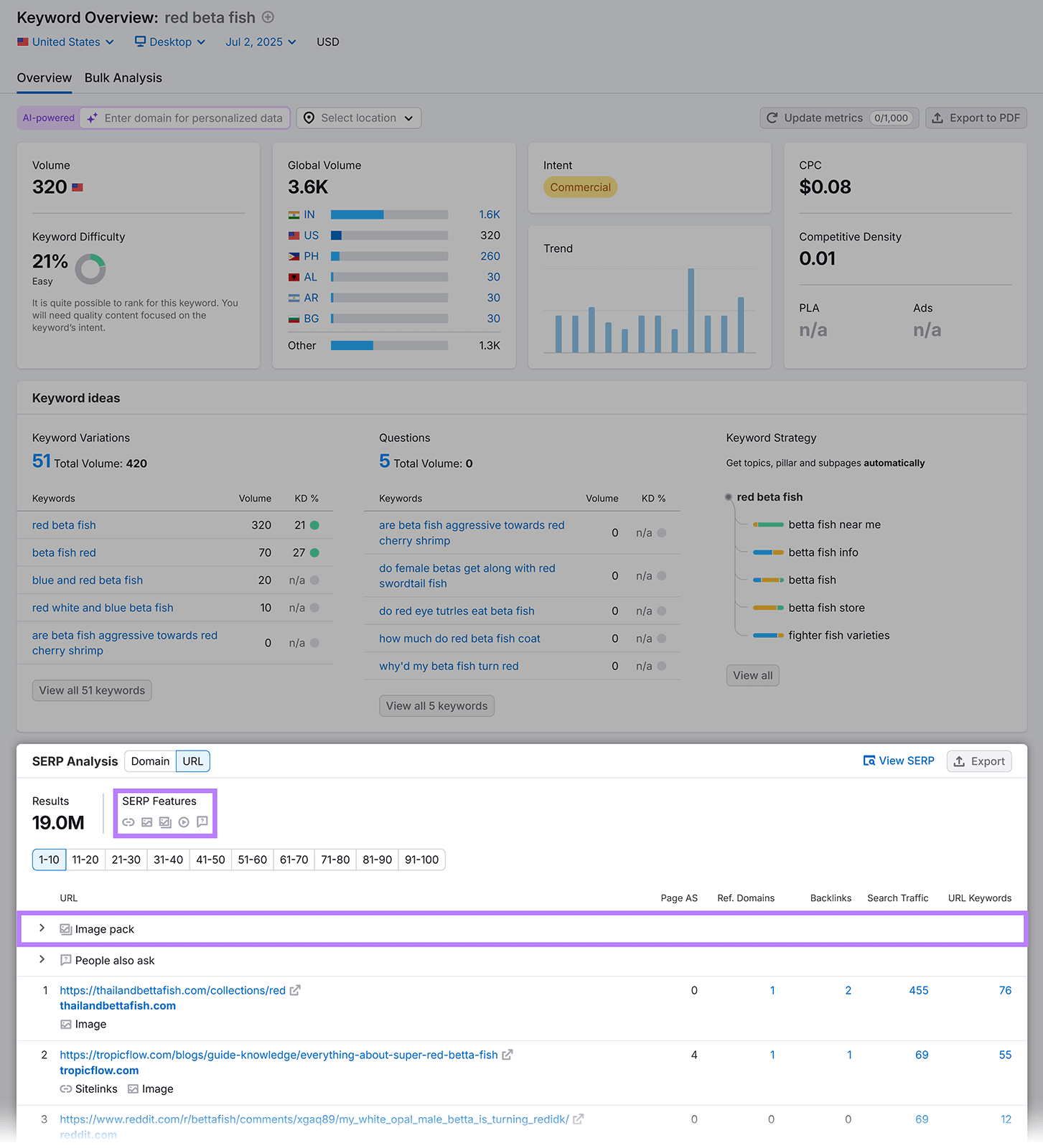
4. Add Contextual Copy
Including relevant surrounding copy (like headlines, product descriptions, and image captions) also helps search engines better understand your images.
For example, if your page includes an image of a hiking backpack and the surrounding text mentions size, color, and use cases (like “waterproof backpack for day hikes”), search engines are more likely to match that image to relevant searches.
This added context also helps with multisearch. The clearer your surrounding copy, the more likely your image will appear—even when it's not an exact visual match.
Like how the image of this bird (created by designer Kay Bojesen) surfaces images of other figurines from the same designer when paired with the word “elephant.”
5. Implement Product & Image Schema Markup
Schema markup is a type of structured data (code that’s shared in a standardized format) to help search engines understand what’s on the page to better match it to queries.
Product schema can include details like the product’s availability and price. And these details can show in the search results. To reinforce to searchers that the image is shoppable.
Like this:
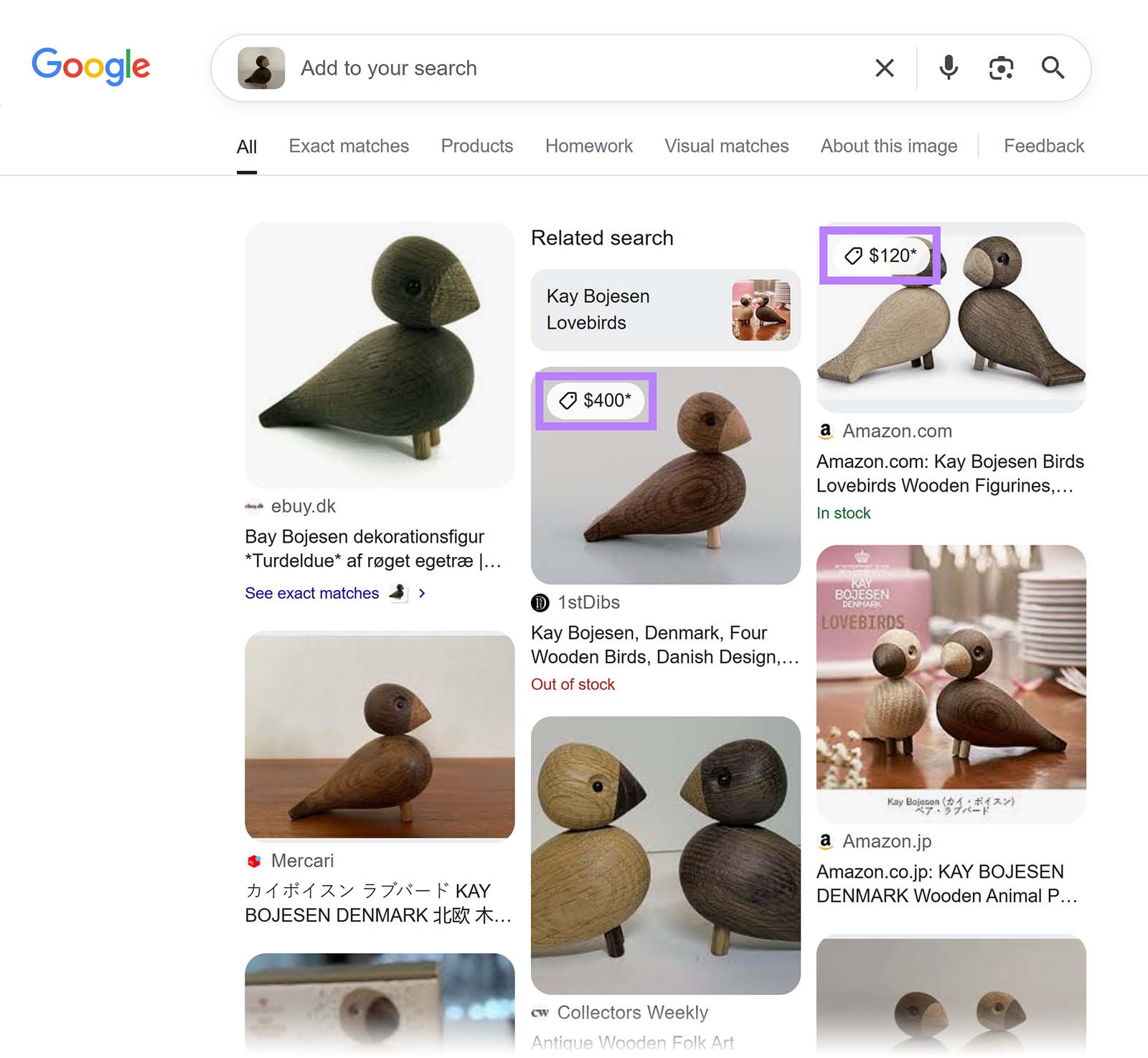
Add other relevant structured data to your pages as well. As this information can increase visibility in all types of search results.
After adding schema markup, use Site Audit to check for any issues.
Configure your crawl and open the audit by clicking your project’s name.
Click “View details” under “Markup.”
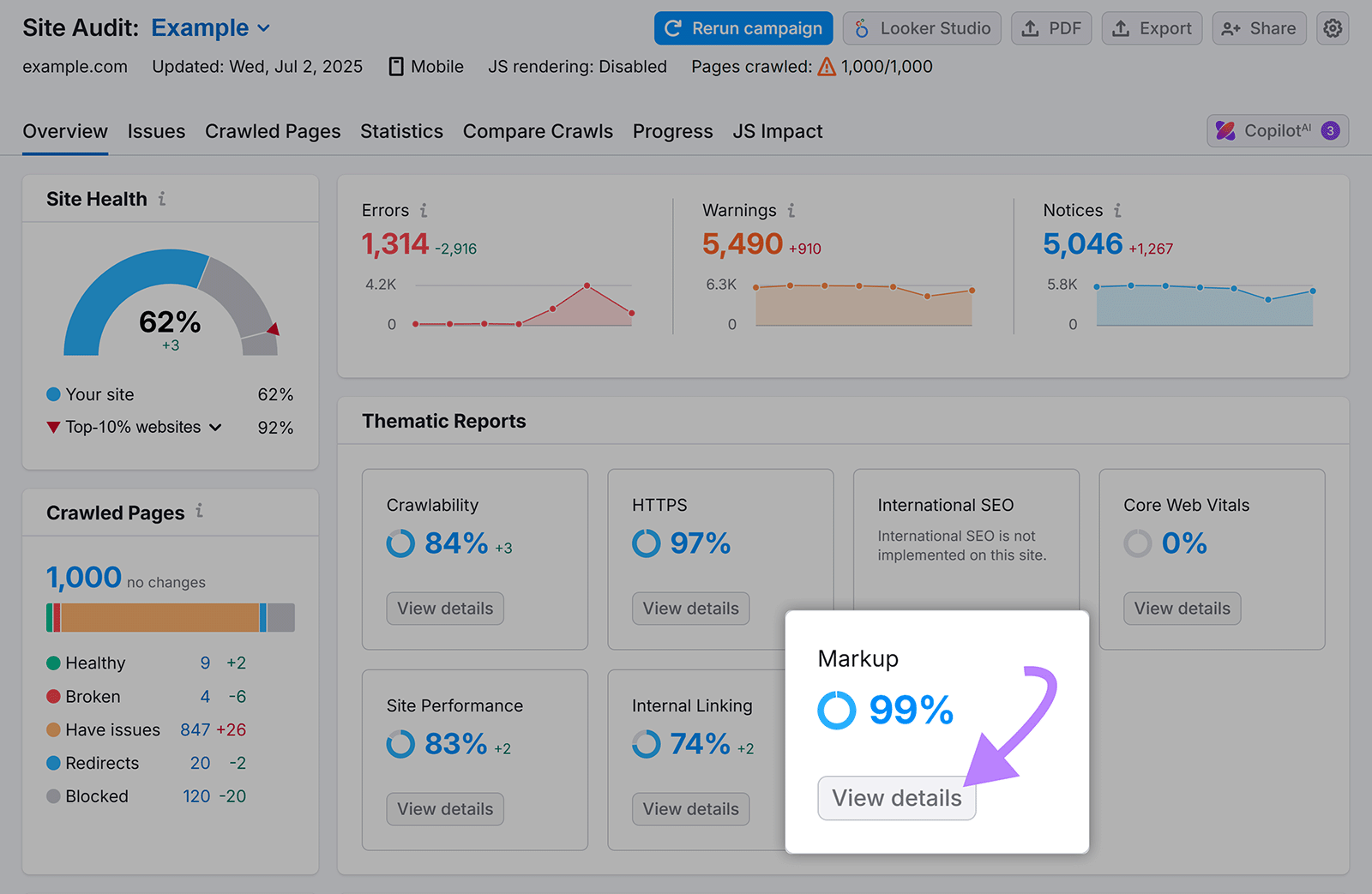
Scroll down and click “View all invalid items” to get a list of invalid structured data items you need to fix.
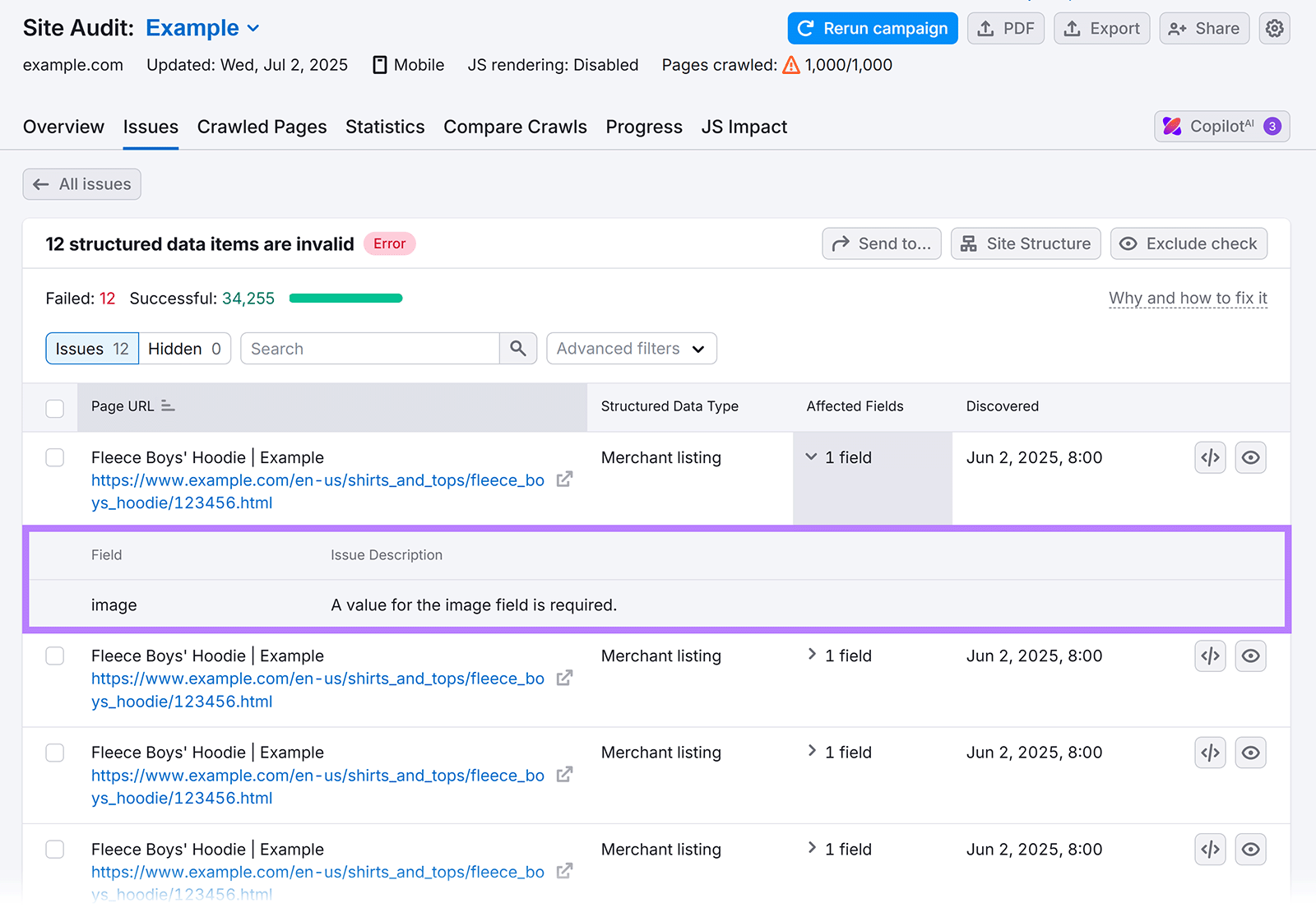
6. Create & Submit an Image Sitemap
An image sitemap is a file that tells search engines which images are on your site and where. To increase the chances of your images appearing in search results.
For most sites, search engines can discover images by crawling your content.
But if images are a key part of your site (like for retailers with lots of products, photographers, or sites with large visual catalogs), an image sitemap gives search engines a clearer picture of what to index.
You can either add image details to your existing sitemap or create a separate sitemap just for images, according to Google.
A sitemap generator tool like DYNO Mapper can help you create an image sitemap.
7. Test Recognition with Google’s Cloud Vision API
Google’s Cloud Vision API lets you see images the way Google does, so you know whether search engines can easily understand your images.
For example, you can upload a photo to see if the tool detects the product, background objects, logos, or any embedded text.
If Google misidentifies or overlooks the main subject, that’s a sign your image may not rank well in Google’s visual search. And you might want to re-take the image with some adjustments.
For example, take a look at how the Cloud Vision API “sees” two different shoe images.
Both show sneakers against a plain background. But the results are very different:
- The tool labels the first image mainly by color as “Red” (98%) and “Orange” (95%)
- The tool labels the second image with more relevant options like “Footwear” (97%), “Fashion” (95%), and “Walking Shoe” (84%)
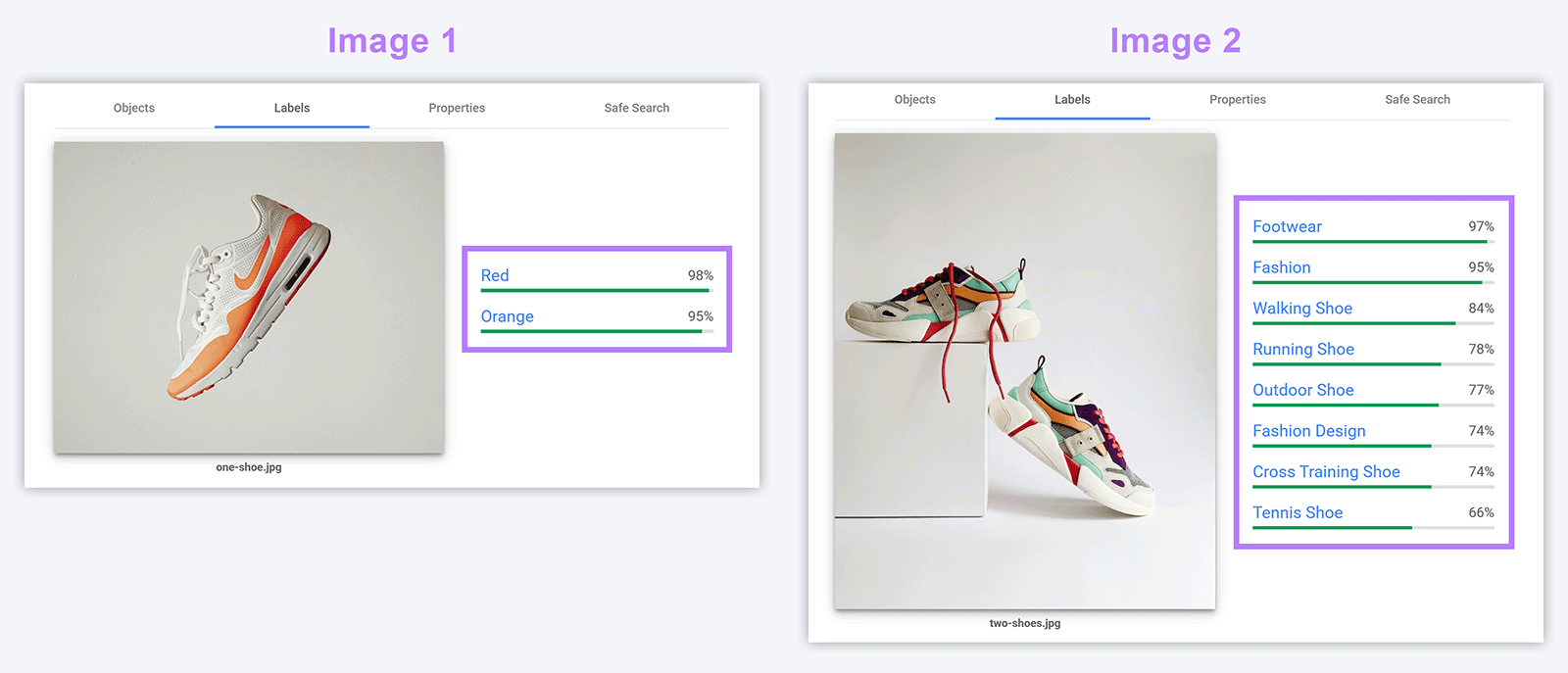
The difference in how Google views these two images highlights that even subtle differences in composition, color, and complexity can impact how well search engines recognize your image.
The results also reinforce that other clues like on-page copy and alt text help search engines more confidently recognize what your image contains.
8. Include Multiple Image Angles
Photographing a product from multiple angles gives you a better chance of appearing in visual searches.
Plus, users may find it helpful to see a product from different angles. To help them finalize a purchase decision.
Take this photo of a wooden figurine taken from four different angles.
When we ran each image through Google’s visual search, the results varied. And each angle returned a varied mix of websites, products, and related queries. And no single webpage ranked for all four.
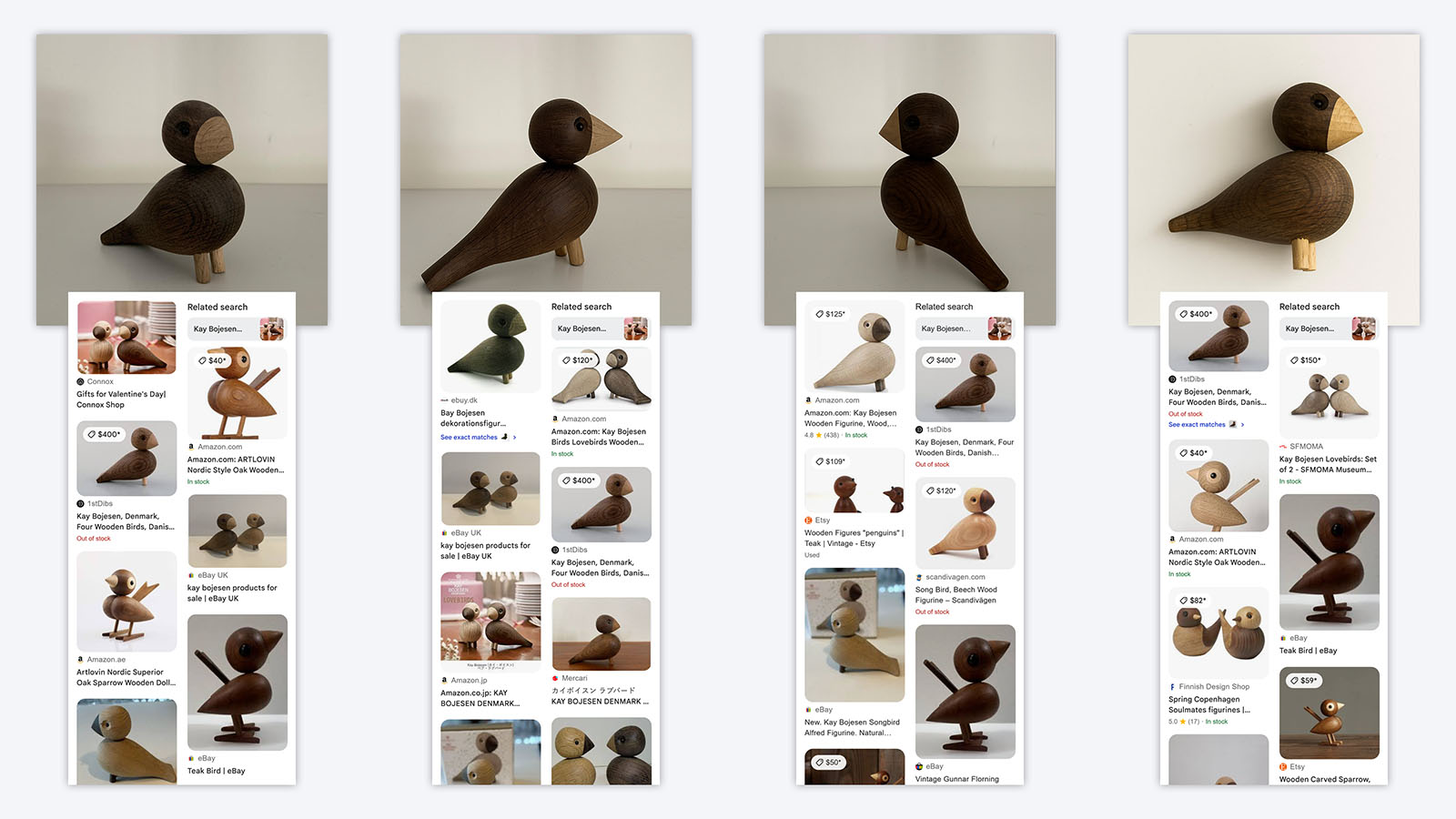
How to Find and Fix Image Issues
You may need to improve your alt text, file names, or surrounding copy if your images aren’t getting visibility.
Site Audit can give you tips for improving your images.
Here’s how.
Open your project in Site Audit.
Click “Issues” and search “image” to view all image-related issues.
Click the issue to see which pages or images are affected. And click “Why and how to fix it” for resolution tips.
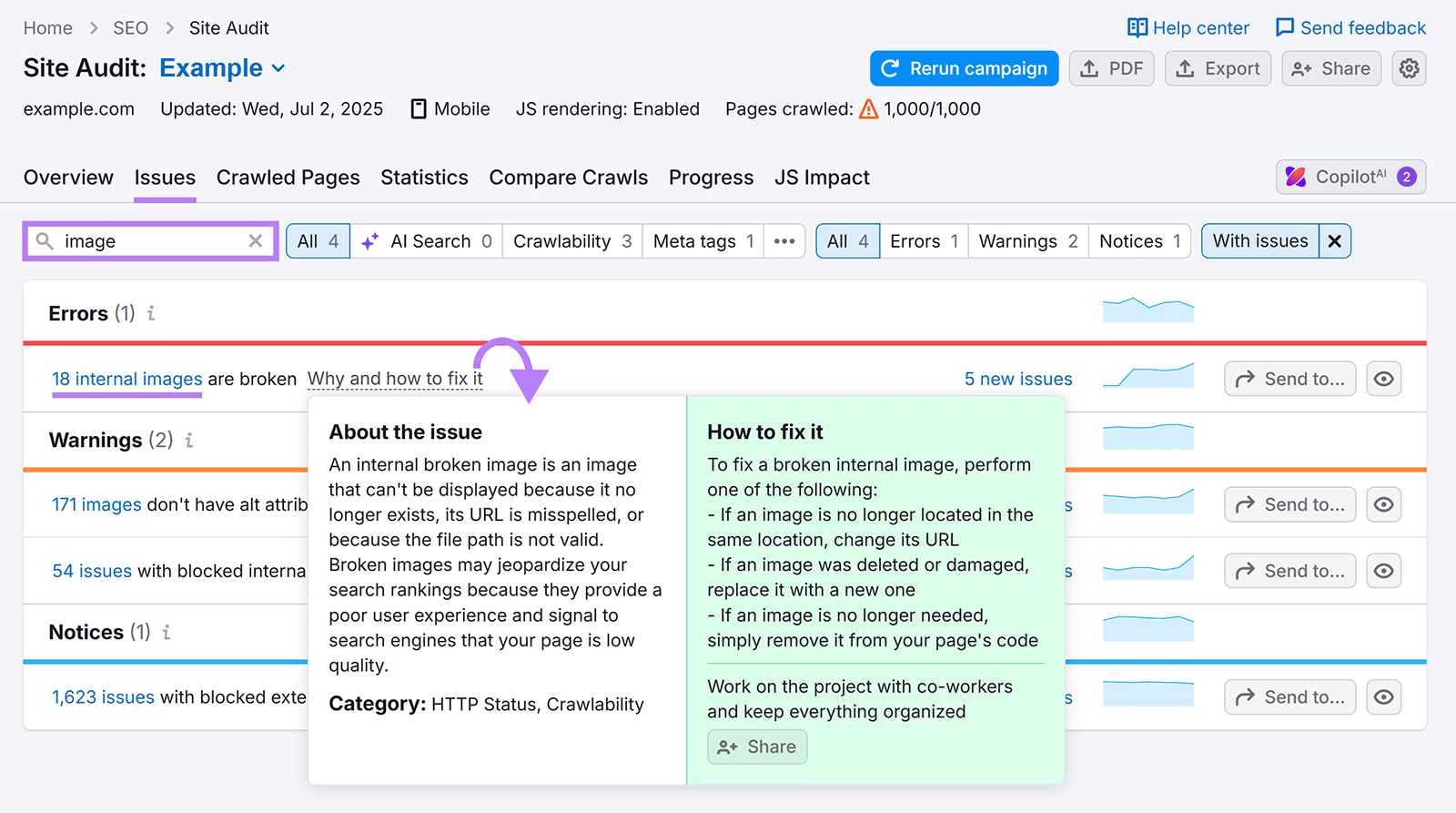
Making these sorts of changes can improve your visual search performance and your image search performance.
We compared the image rankings of furniture retailers TOV Furniture and Rove Concepts to see how image SEO best practices may affect visibility.
Even though TOV Furniture ranks for nearly half as many keywords as Rove Concepts (~17.5K vs. ~33.8K), TOV Furniture appears in almost twice as many Google image packs.
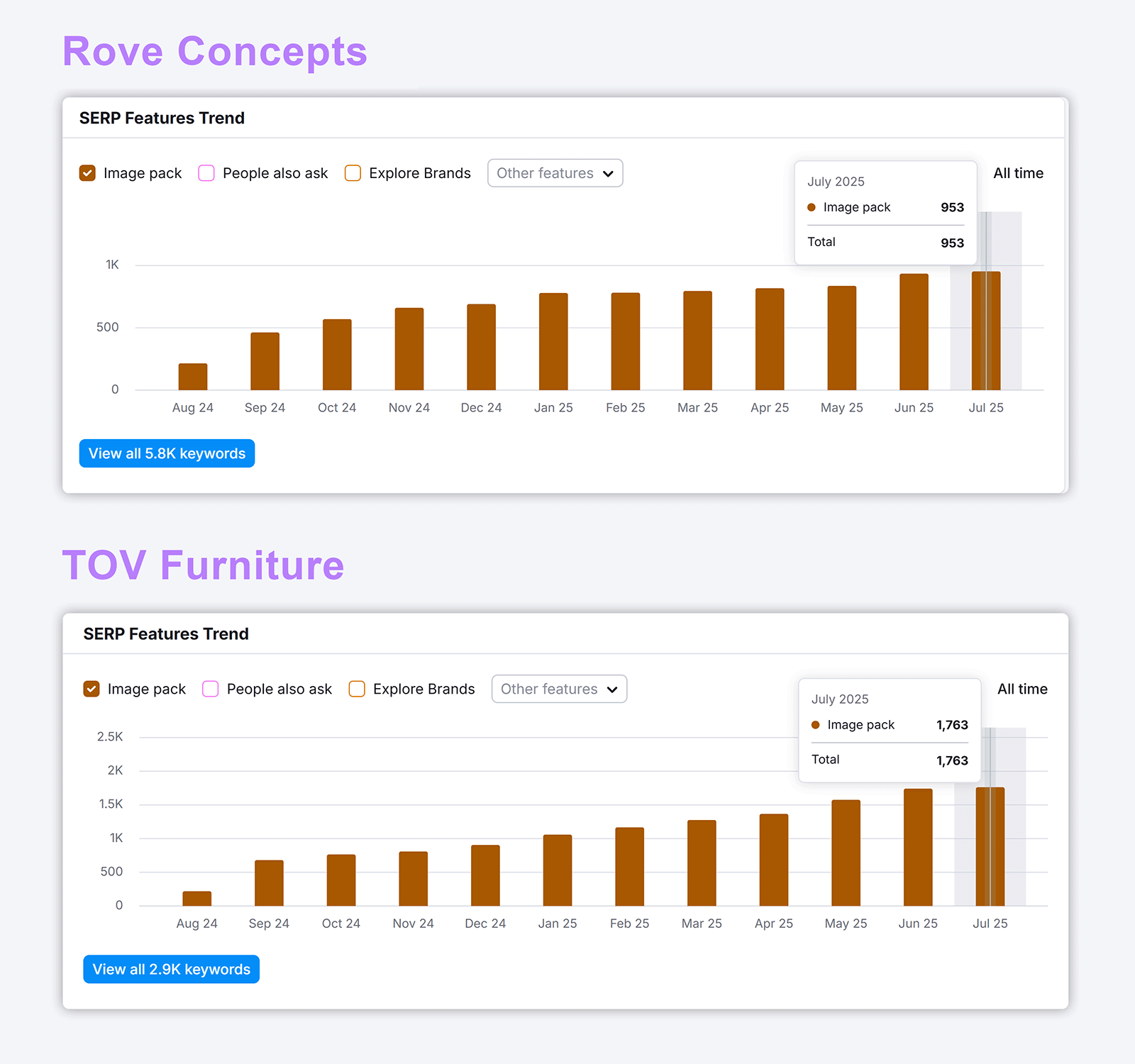
A Site Audit reveals that TOV Furniture has no image errors. And only one warning.
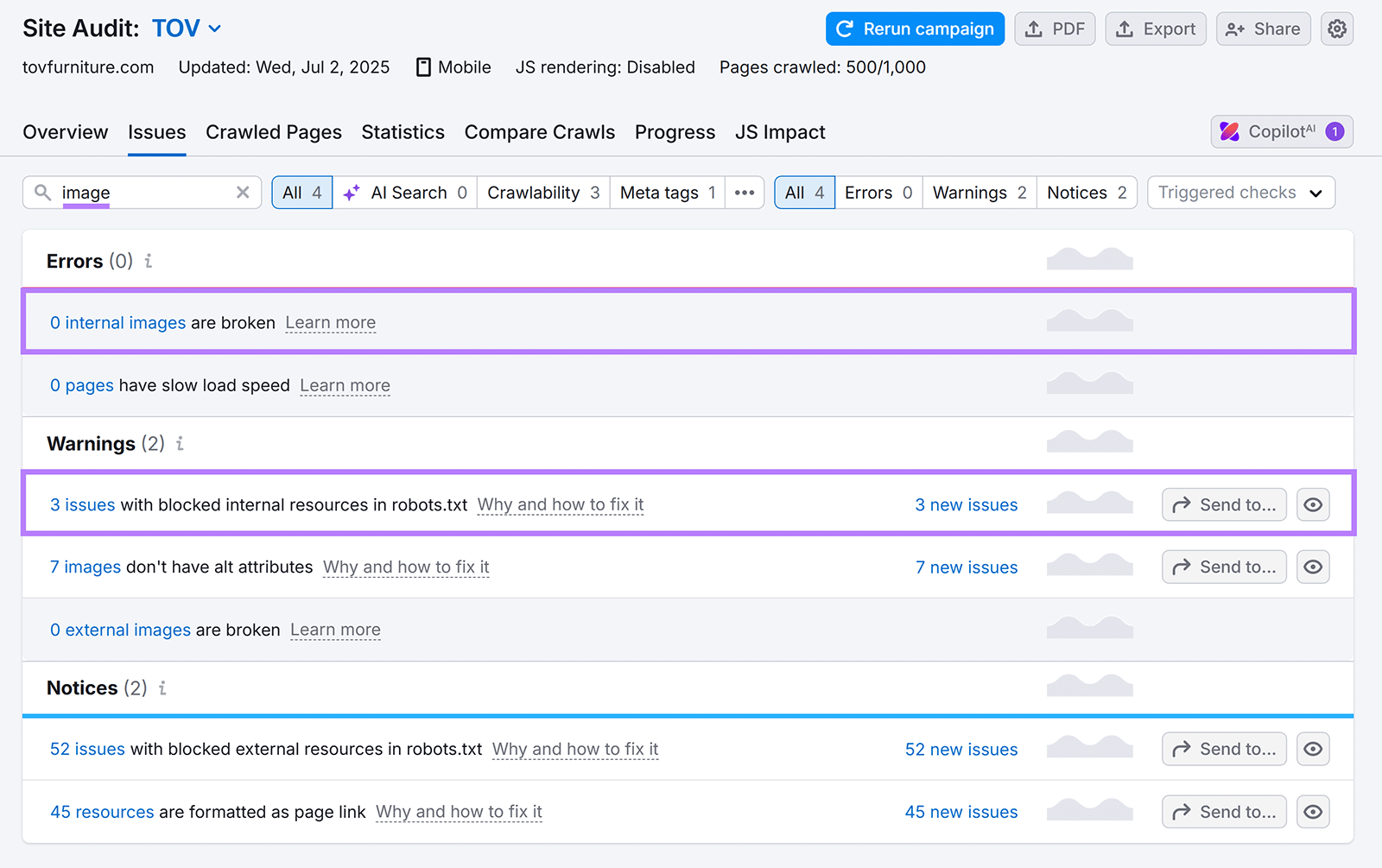
Rove Concepts has more errors and warnings. Which may impact its ability to rank in visual searches.
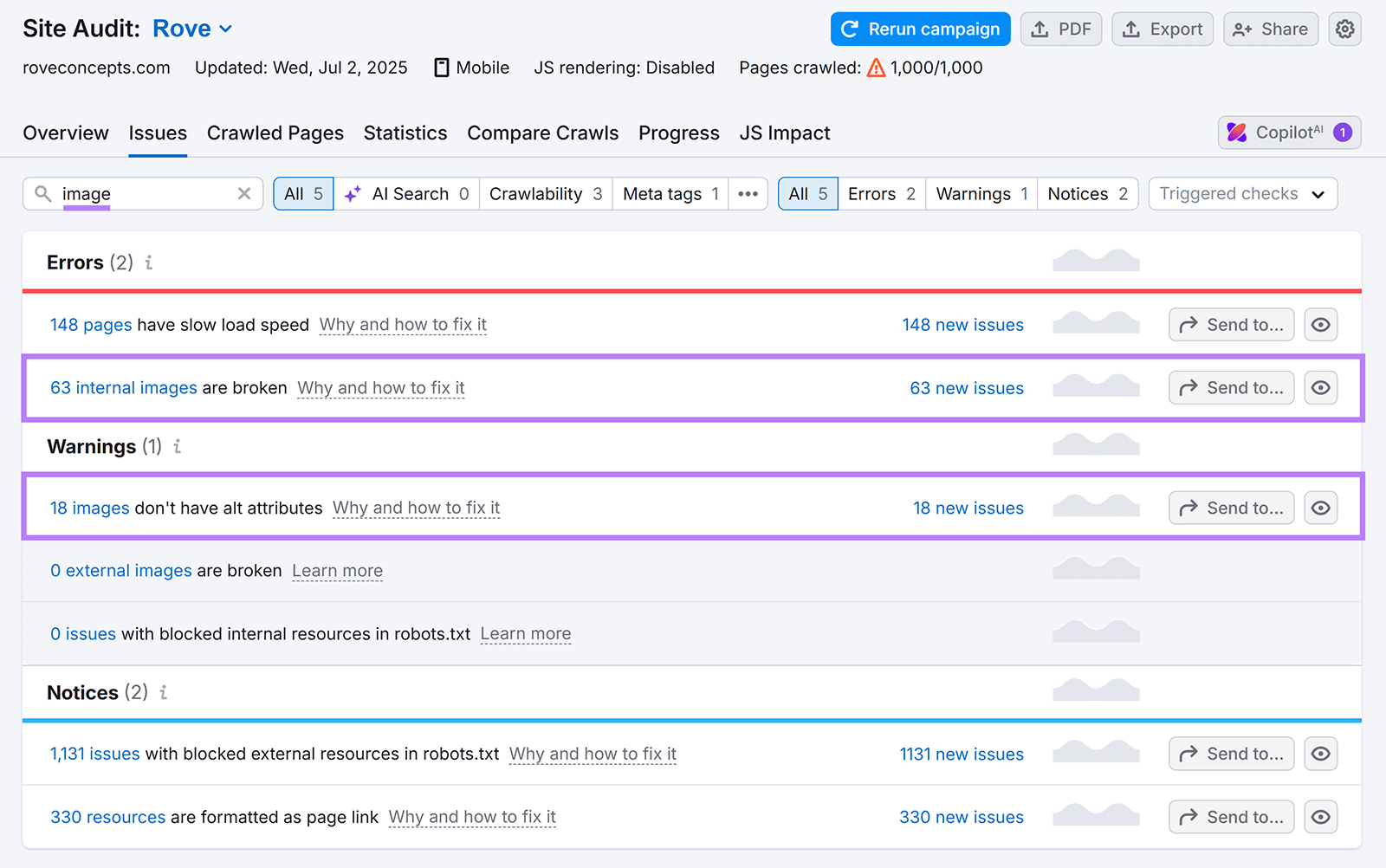
How to Approach Image Optimization in the Age of Generative AI
Visual content is becoming more visible across SERPs and AI-generated results, and you can use tools and manual checks to understand how your images may be showing up.
You can:
- Use Keyword Overview to see which keywords you target contain images in the SERPs
- Perform visual searches and multisearches to see if your content appears in the results. This helps gauge how well your visuals rank when users add descriptive keywords.
- Use Semrush’s Position Tracking tool to track SERP features like AI Overviews and images to give you a view of your overall visibility across these placements
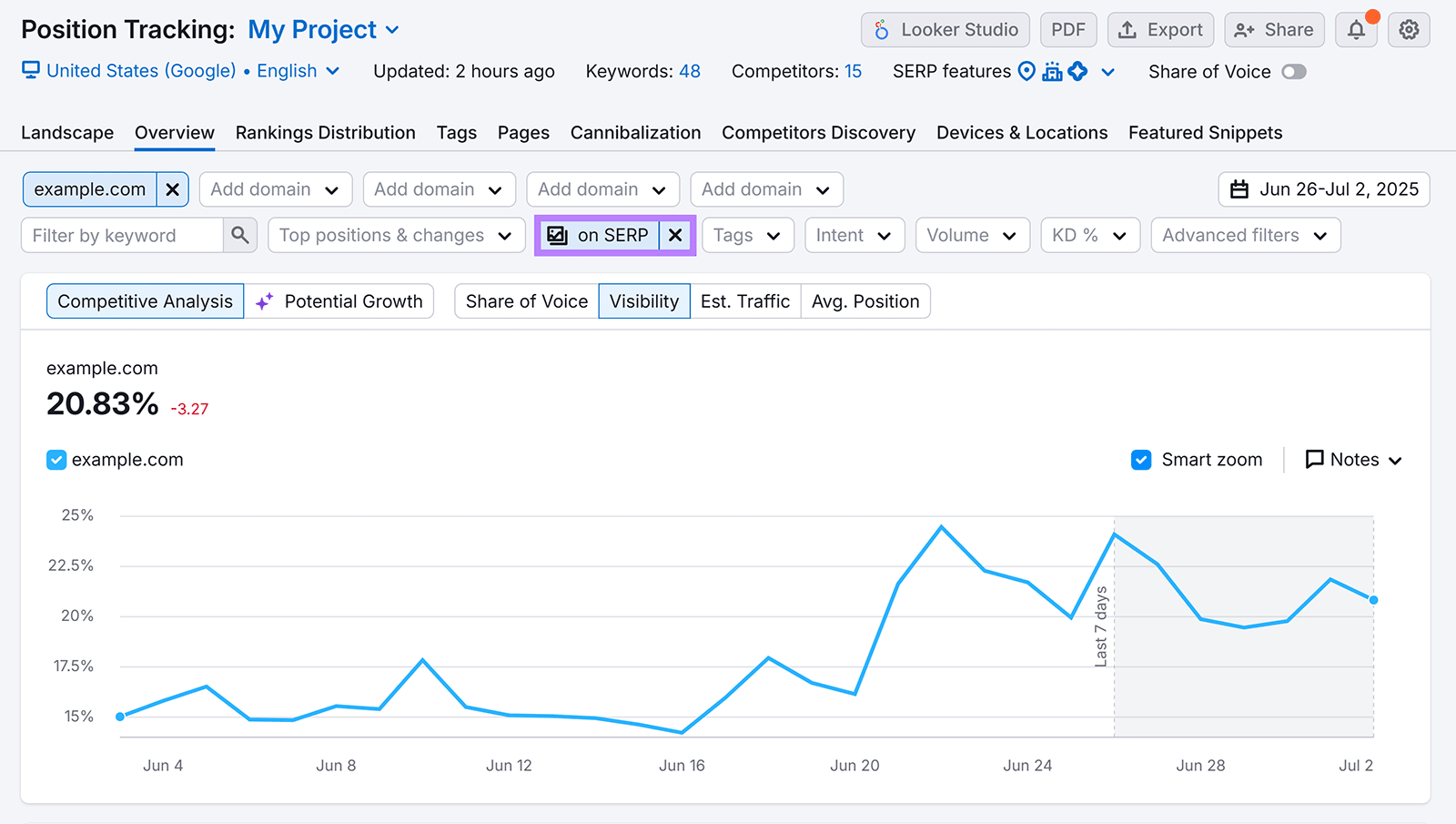
Start Your Visual Search Optimization Journey
Optimizing your images is the first step to standing out in visual and AI-powered search results.
And with Semrush’s Site Audit, you can quickly identify which images you can adjust to make the biggest impact.
Give Site Audit a try.